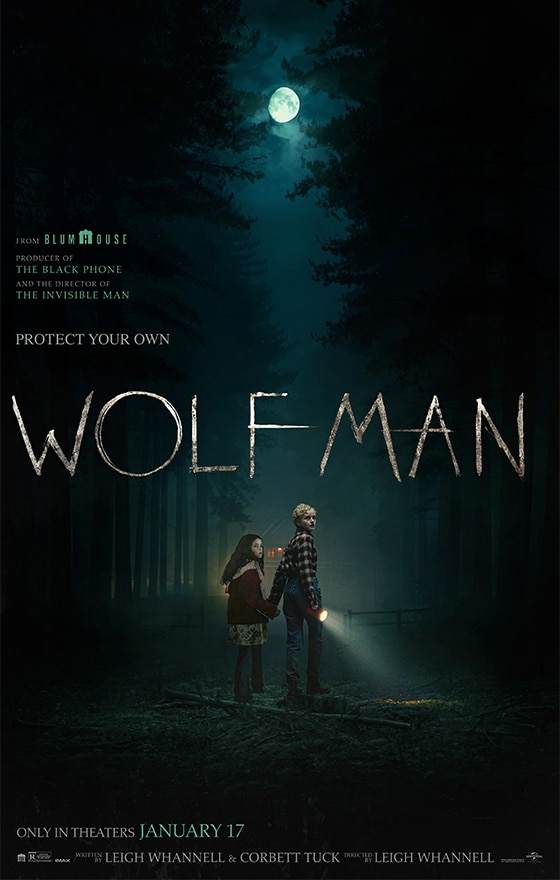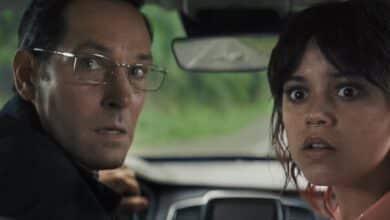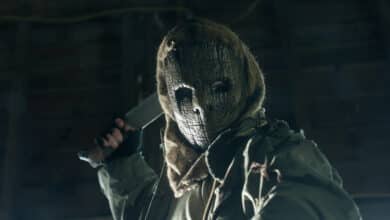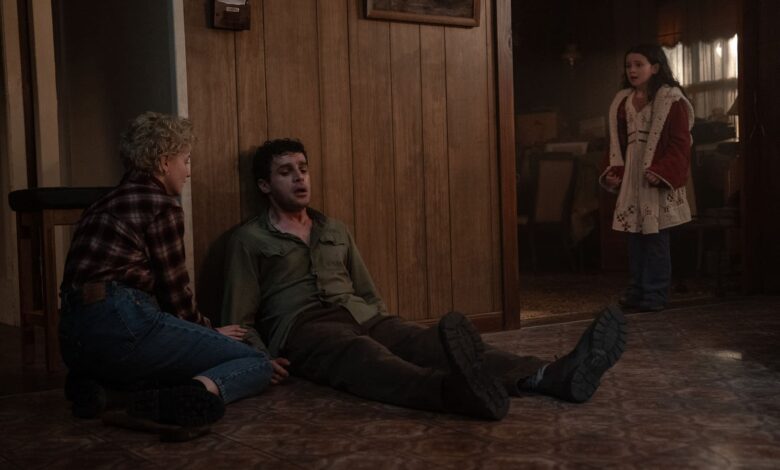
Leigh Whannell’s Wolf Man offers an ambitious, yet ultimately underwhelming take on the classic Universal monster, aiming to explore themes of trauma, loss, and generational dysfunction. But while its intentions are strong, the film’s execution is a mixed bag, plagued by an identity crisis that ultimately leaves it toothless, both narratively and emotionally.
The film begins with promise, setting the stage in the misty forests of Oregon, where Blake (Christopher Abbott), a devoted but troubled father, returns to his childhood home with his wife, Charlotte (Julia Garner), and daughter, Ginger (Matilda Firth). After a harrowing car accident, they find themselves trapped in an isolated farmhouse, unknowingly locking themselves in with the very danger they were fleeing. Blake begins to transform into something monstrous, and the slow, painful metamorphosis forms the backbone of the story.
Whannell’s take on Wolf Man is way less special than I thought it would be. The concepts of generational curses/traumas are explored with Blake wrestling with the fear that he’s becoming like his domineering, emotionally distant father, who once subjected him to a harrowing deer hunt in these same woods. This theme of breaking the cycle and trying to be a better parent is well-intentioned and relatable, but it feels repetitive and overly articulated, particularly in one scene where Blake flatly spells out his parental anxieties. It’s a subtle narrative thread, but one that doesn’t evolve much throughout the film and we have already seen this machismo Werewolf metaphor before.
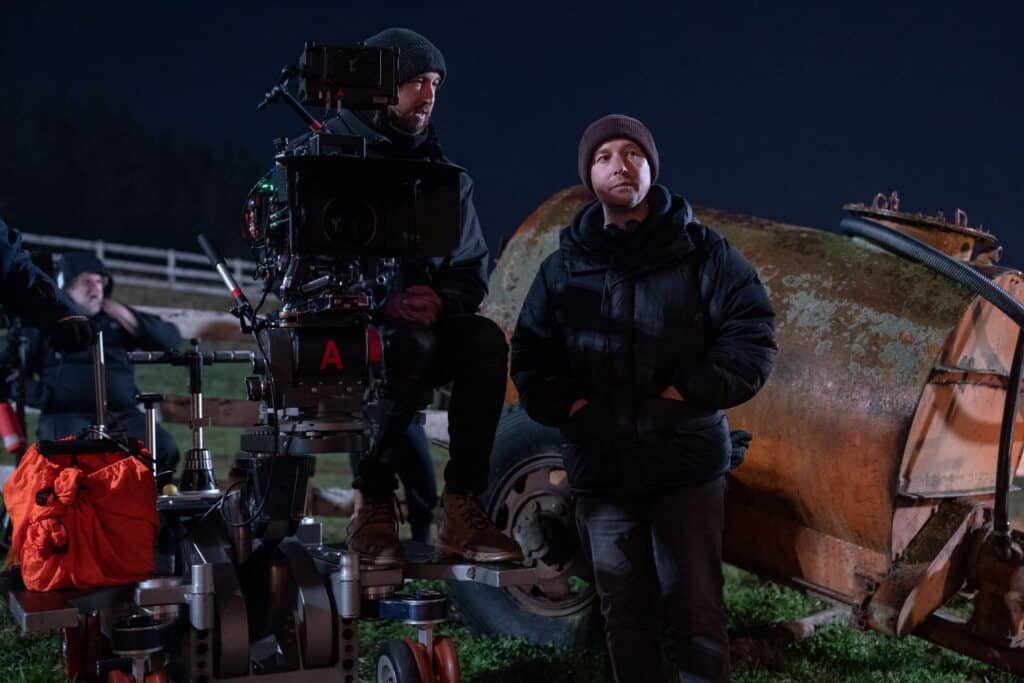
Whannell’s direction in Wolf Man shines through in its striking visuals and memorable moments. His ability to craft an atmosphere of tension and unease is evident in every frame, from the foggy, isolated forests to the claustrophobic interiors of the farmhouse. The use of perspective, especially during Blake’s transformation, offers a unique and haunting look at his descent into monstrosity. Whannell’s attention to detail, paired with clever camerawork and sound design, elevates the film’s horror, creating unforgettable images that linger long after the credits roll. These moments may not all hit the emotional high notes, but they undeniably leave a lasting impression. And that SAW reference? Left me HOWLING!
The creature design in Wolf Man is an unfortunate letdown, especially given the rich history of werewolf lore and transformation in cinema. While Whannell opts for practical effects in an attempt to ground the film in realism, the result is a creature that feels underwhelming and lackluster. Blake’s transformation, though physical and painful to watch, lacks the primal power and monstrous allure of traditional werewolves. The final form of the wolf-like creature is more human than beast, with unruly hair and fangs that never quite achieve the terrifying, feral quality one might expect. The prosthetics and makeup, though well-executed in parts, never fully capture the essence of the mythic creature, leaving the audience with a creature that is more pitiable than fearsome. In the end, the film’s lack of a truly intimidating or spectacular monster robs it of one of the key elements that defines a great werewolf movie.
Despite its ambitions, Wolf Man struggles to find the balance between horror and heart. The film feels more like an infected-person narrative than a true werewolf story, and it never quite capitalizes on the horror potential of its premise. The sparse action is punctuated by moments that should be tense, but often come across as awkward, such as a poorly executed scene on top of a flimsy plastic greenhouse that borders on unintentional comedy. The real fear, however, lies in Blake’s internal battle—losing his sense of self and watching his family fear him—yet Whannell doesn’t go far enough to explore these darker psychological depths.
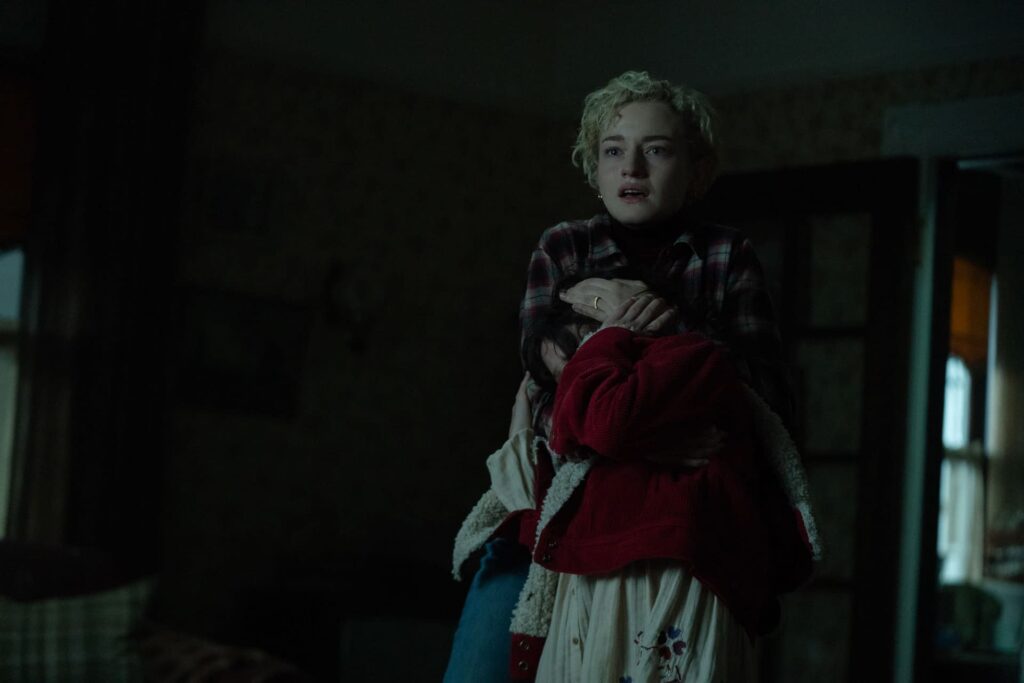
Julia Garner’s Charlotte and the rest of the cast are serviceable, but they feel like placeholders in a film that was more concerned with the mechanics of transformation than with creating complex relationships. Charlotte’s role, in particular, is disappointing, as she falls into a dated “damsel in distress” trope, offering little more than a scared wife to Blake’s suffering.
The horror in Wolf Man delivers a thrilling and unsettling experience that is sure to keep audiences on the edge of their seats. Whannell’s atmospheric direction and clever use of sound design create an intense, immersive environment where tension constantly builds. The transformation scenes, though not as spectacular as some might expect, are visceral and unsettling, bringing a palpable sense of discomfort as Blake’s body morphs into something monstrous. There are a few genuinely frightening moments, bolstered by jump scares and eerie imagery that make the film a fun and exciting ride for horror fans. The claustrophobic setting of the isolated farmhouse amplifies the sense of dread, and while the film doesn’t necessarily reinvent the werewolf genre, it offers a solid, scary time for those looking to indulge in some creature-feature fun.
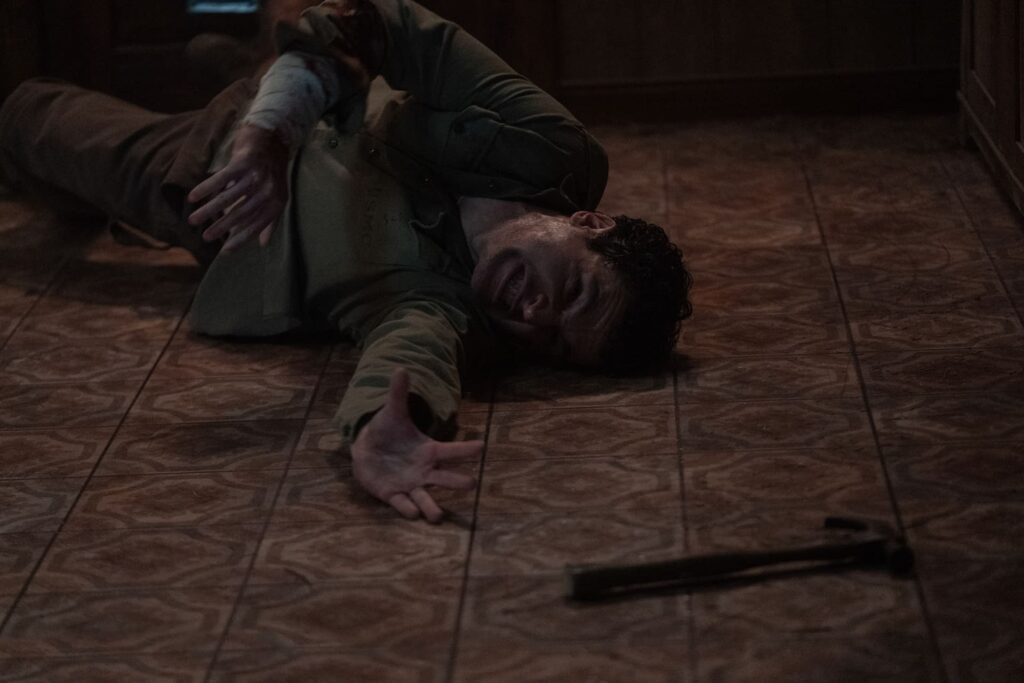
Ultimately, Wolf Man feels like a missed opportunity. It’s a film that tries to redefine the werewolf mythos through a psychological lens, but in doing so, it sacrifices much of the creature’s power and the emotional stakes that could have made the horror all the more compelling. While Abbott delivers a strong performance, the film is too bogged down in its own symbolism and slow pacing to fully embrace the raw intensity of the original monster. It’s an enjoyable watch, but one that never quite captures the tragedy or thrill of its iconic predecessors.
3.5/5 Stars


